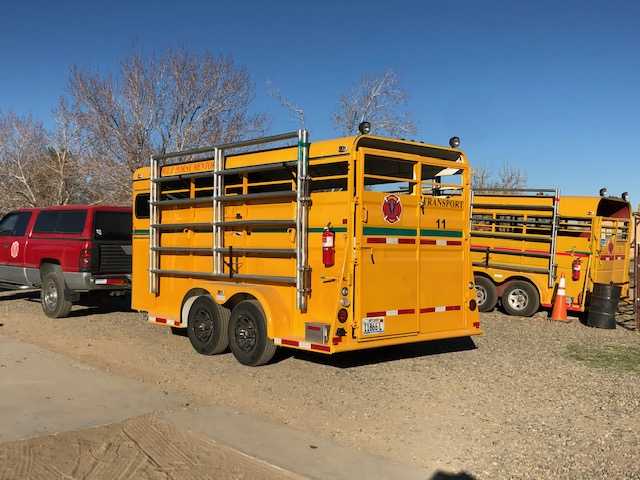|
Most trailers are occasional use vehicles, generally having significant mass that can cause a loss of control if they become disabled or unhitched while being towed. Furthermore an unhitched trailer that breaks free of its safety chains can become an unguided deadly missile on the highway. For this reason all members shall perform a pre-trip inspection before embarking on any activity involving vehicles towing trailers.
We recommend that everyone gets into the habit of performing pre-trip inspections before towing regardless as to whether the activity involves the team or whether the activity is personal.
Experience has shown that a simple 5-minute pre-trip inspection can help prevent a hazardous, costly and time consuming accident or breakdown.
|
|
Recommended Inspection Practices
|
Before Hitching.
- Check hitch ball for proper size for the trailer.
- Check the drawbar to determine that the drawbar pin is properly secured and that the hitch ball is not loose. (We recommend using a drawbar pin that can be locked over one secured by a hairpin clip as the clip can snag on brush and road debris and pull loose.)
- Look under the back of the vehicle to verify that the hitch and electrical system are undamaged.
Tow Vehicle.
- Check tires for proper air pressure, sufficient tread, abnormal wear and/or grease showing around wheel bearings.
- Check for leaks and other signs of potential mechanical failure.
- Check mirrors for cleanliness and proper adjustment.
- Check windshield wipers for excessive wear, especially with infrequently used tow vehicles that are parked out in the weather.
- And don't forget to check engine fluid levels, especially with older vehicles that might have minor leaks.
Trailer.
- Visually inspect the trailer for loose components and/or for the proper securing of equipment carried on the trailer.
- For animal trailers, inspect the interior for sharp or loose objects and that the floor, sides, gates and doors and their latches are in proper working order.
- Check tires for proper air pressure and sufficient tread.
- Look for signs of loose wiring, with particular focus on electric brakes, tail lamps and stop/turn signals.
- Make sure you have an appropriate jack and proper lug wrench for the trailer.
After Hitching Up.
(Note: This is an inspection following the hitching process to ensure that a critical step has not been overlooked.)
- Check to see that the appropriate drawbar has been used so that the combination is level.
- Inspect the hitch and verify that the coupler is properly attached to the drawbar ball and that it is properly locked.
- Inspect the safety chains and verify that they are properly crossed and attached.
- Inspect the break-away "rip cord" and verify that it will engage the emergency brakes in the event the trailer becomes unhitched.
- Inspect the drawbar hitch pin and make sure that it is properly locked.
- Inspect the trailer electrical plug and make sure that it is locked properly into the receptacle.
Starting the Tow Vehicle.
- Check the trailer brake controller for a "connected" indication. (May not apply to older controllers.)
- Check the fuel gauge to make sure you aren't rolling out on an empty tank.
- Pull forward slowly, manually actuate the brake controller and feel for the brakes to apply.
- Turn on the vehicle's headlamps and 4-way emergency flashers. Do a walk-around to verify that all lamps on the tow vehicle and trailer are operating properly.
- (During the lamp inspection walk-around) Double check that all gates and doors are secured and that the trailer hitch is still properly latched following the in-cab brake check.
- When starting out, apply the service brakes a couple of times on hard pavement and adjust the brake controller as necessary to provide the appropriate amount of "drag" from the trailer brakes.
Once you get in the habit of making pre-trip inspections, an inspection can be completed in a relatively short time.
ALWAYS REMEMBER!
Your objective is for animals to be relocated safely.
Your priority is for operations to be conducted safely.

|





